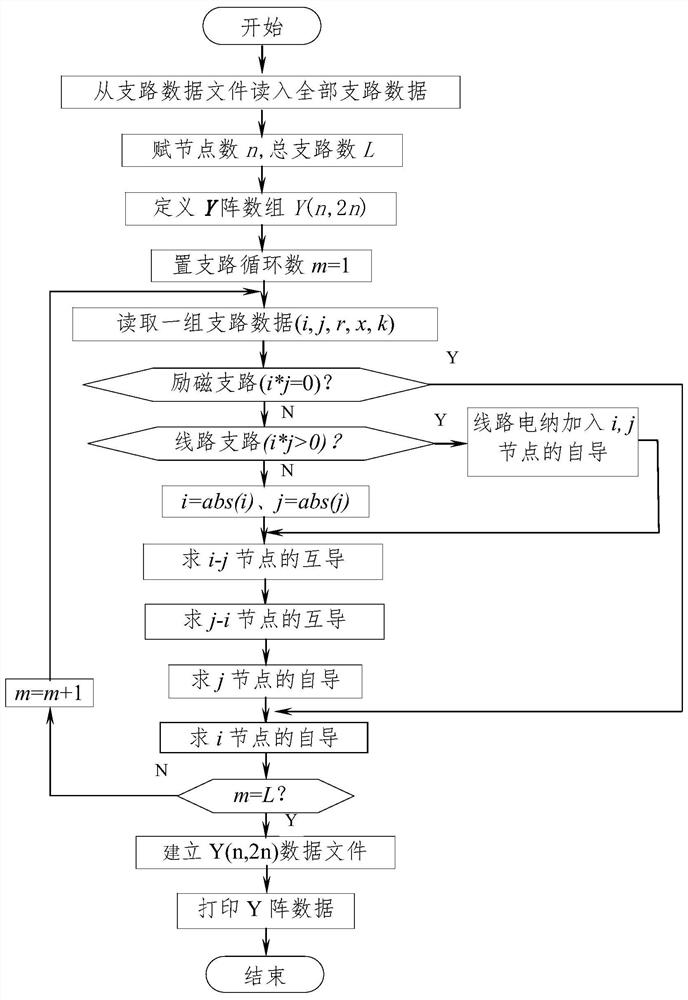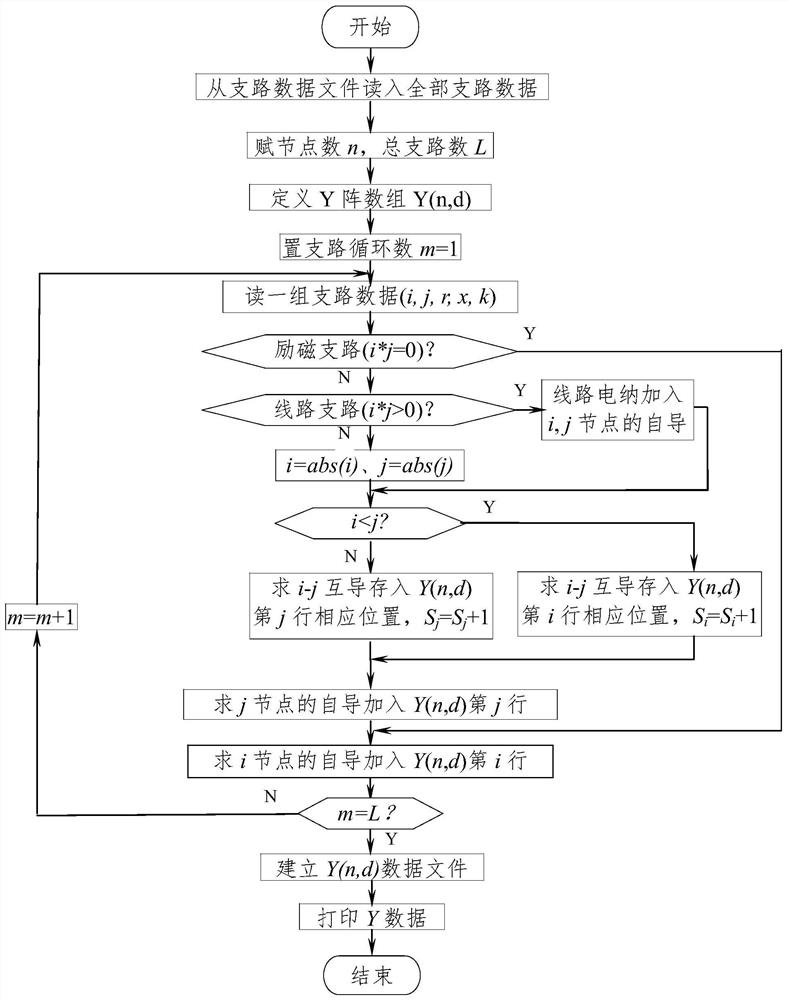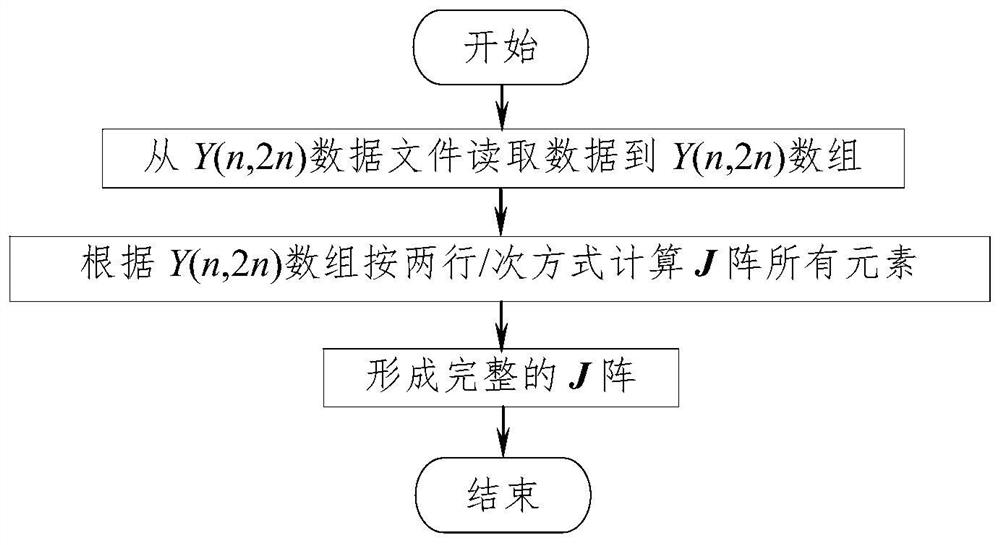A method for fast formation of Jacobian matrix in power system power flow calculation
A technology of power flow calculation and power system, applied in the field of Jacobian matrix, can solve the problems of complex storage structure, long time, inconvenient calculation, etc., and achieve the effect of reducing storage units, improving reading and writing speed, and eliminating judgment.
- Summary
- Abstract
- Description
- Claims
- Application Information
AI Technical Summary
Problems solved by technology
Method used
Image
Examples
Embodiment 1
[0056] For IEEE-30, -57, -118 systems, the comparison of the Y (n, 2n) mode and the Y (n, d) mode of the present invention that does not consider the sparseness of the traditional method respectively forms and stores the Y matrix data file time As shown in table 2.
[0057] Table 2 is the comparison of the traditional method and the present invention forming and storing the Y-array data file time for the IEEE system.
[0058]
[0059] t 11 , t 21 : Form and store the Y array data file time for the traditional method and the present invention respectively.
[0060] t 21 / t 11 (%): The present invention and traditional method form and store the percentage of time of Y array data file.
Embodiment 2
[0062] For IEEE-30, -57, -118 systems, the time comparison between reading Y-array data files and forming J-array data files with the traditional method and the present invention is shown in Table 3.
[0063] Table 3 is the comparison of the traditional method and the present invention for reading the IEEE system Y-array data files and forming the J-array time.
[0064]
[0065] t 12 , t 22 : respectively the time for traditional method and the present invention to read Y array data files.
[0066] t 22 / t 12 (%): the percentage of the time for reading the Y-array data file between the present invention and the traditional method.
[0067] t 13 , t 23 : Respectively the traditional method and the time of the present invention forming the J array.
[0068] t 23 / t 13 (%): The present invention and traditional method form the percentage of J array time.
[0069] According to Tables 2 and 3, it can be seen that:
[0070] 1. No matter in the process of forming and st...
PUM
 Login to View More
Login to View More Abstract
Description
Claims
Application Information
 Login to View More
Login to View More - R&D
- Intellectual Property
- Life Sciences
- Materials
- Tech Scout
- Unparalleled Data Quality
- Higher Quality Content
- 60% Fewer Hallucinations
Browse by: Latest US Patents, China's latest patents, Technical Efficacy Thesaurus, Application Domain, Technology Topic, Popular Technical Reports.
© 2025 PatSnap. All rights reserved.Legal|Privacy policy|Modern Slavery Act Transparency Statement|Sitemap|About US| Contact US: help@patsnap.com



